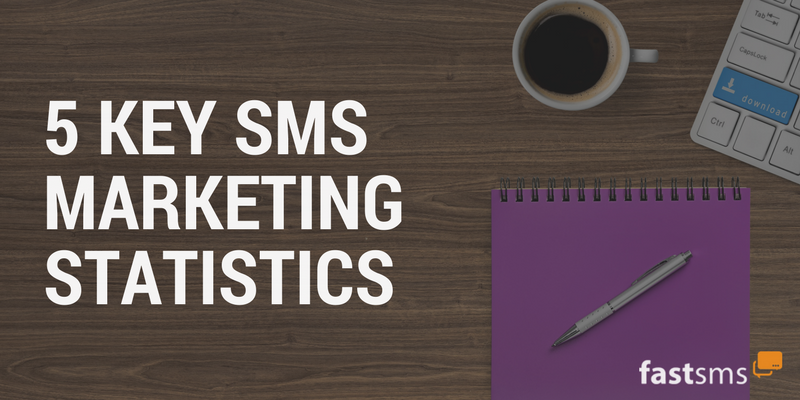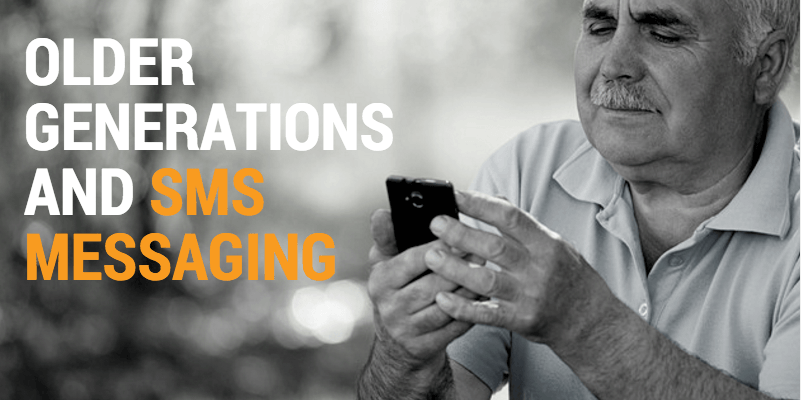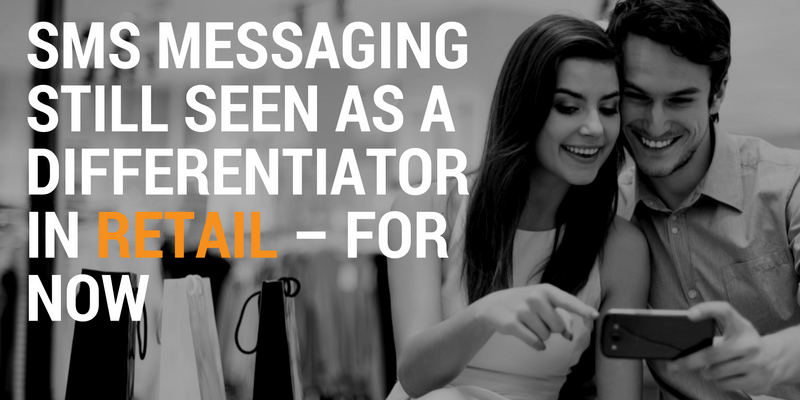5 Key SMS Marketing Statistics

At the end of 2013 (and it’s still relevant today!) Forbes.com published an article titled Fifty Essential Mobile Marketing Facts. It covers mobile marketing in total from various sources and studies. I’ve pulled out the top five specifically addressing SMS marketing to share with you in this post.
These facts aren’t in any specific order of importance or value. They’re just numbered so that you know that there are indeed, five. But make full use of these stats and you will reap the benefits in your next campaign.
1. According to a 2007 Morgan Stanley study, 91% of adults are never farther than arm’s reach from their smartphones. I know this is true for me, and just about everyone I know. Consider this study was done in 2007 and it’s a good wager that the percentage is even higher in 2014. Smartphones have become even more integrated into our lives than when Apple released the first iPhone in 2007. Take from this that your SMS campaign will work best with a call to immediate action; your message will almost always be read within minutes and action should ensure straight away.
2. Probably the most often quoted statistic in SMS marketing is 90% of text messages are read within 3 minutes. The Forbes article quotes “ImpigeMobileStrategy.com” as the source for the statistic, but the domain can’t be found by Google. After more searching I found an article on Tatango.com describing a similar search for the source. They discovered it really originated in a study performed by mobileSQUARED and SinglePoint based on a compilation of data from various 2009 and 2010 studies. It would be very interesting to see someone produce an updated study to see if text messages still have such a high open rate. If I had to guess, I’d say it’s still very near to that number based on data trends in other studies.
3. GoMoNews.com reports brands using SMS successfully reach 95% of smartphone and non-smartphone users. This ties into the same statistic above indicating a 90% text message read rate. The percentage is potentially higher for brands because the customer must have given the brand permission to text them. Recognition of the text sender, via brand recognition, most likely equates to a higher read rate. So for retail brands, SMS offers a direct to customer advertising option that builds brand loyalty and recognition of your company.
4. Mobile Marketer reported in February 2013 that 42.3% of customers prefer SMS deals over bar code scans or push message coupons. Personally I agree. But at 42% it isn’t universal. Many marketers point out that text messaging is a very intimate way to communicate. Some people just don’t want retail companies able to reach that far into their personal sphere. It’s especially important to ensure that you get opt-in permission for retail usage of SMS to avoid any potential issues. Overuse of SMS marketing can be counterproductive, in general you should not send the same kind of communication more often than once per week; so only one special offer, one competition entry, one “how-to” message.
5. 50% of people in a survey reported on Marketingcharts.com say they’ve responded to a text offer. The Forbes article doesn’t quote a date for that study so I went looking for it. Marketingcharts.com has a huge variety of charts and data which is probably why I couldn’t locate the exact study quoted by Forbes. But I did find a 2012 study that said 25% of people purchased a promoted product based on a text message. Another 26% purchased a different product in response to the text they received. The highest response of the study was the 38% of respondents that visited the retailer’s website to find out more information about the offer received via text message.
What does this variety of statistics mean? Overall it paints a picture of an effective, but also personal, form of communication. The trend for mobile usage is incontestably in an upward direction, though percentages vary study to study. Will SMS messaging remain an effective way to communicate? I think so. What do you think?
Related Articles
Why People and Companies Prefer SMS Messaging for Customer Support
People like SMS messaging. They really do. In a variety of surveys and studies, consumers continue to say they like it when companies use SMS to communicate with them. Let's look at some of the data that proves it to be true, and also how to make sure your company is using it correctly for customer support communications.
5 Amazing SMS Statistics from Salesforce
Every year Salesforce releases its State of Marketing report. It offers insight into how marketers use and see the various tools and channels available today. In the 2016 report, much of the content focused on social and email, but also included a good deal of information on mobile marketing too.
Death of SMS? Premature indeed.
Older Generations and SMS Messaging
50% of people between 55 and 64 own a smartphone and 18% of people over 65 do too. If you’re trying to reach out to these older demographics, it might be time to consider mobile marketing. But what kind should you choose?
Marketing Review for 2015 Holiday Season
Comparing SMS and email marketing results for the 2015 holiday season, this article taps into reports from Expedia and Adobe to share important insights.
SMS Messaging Still Seen As A Differentiator In Retail – For Now
How many retailers use SMS messaging? According to a recent survey, not that many. And that isn’t the only surprising result shared in the survey conducted by Internet Retailer. Companies large and small know how useful SMS can be. Read on to see why now is the perfect time to start.
7 Statistics That Show Why You Should be Using SMS Marketing Right Now
You might have heard about SMS marketing and thought it wasn't for you. Maybe you're unconvinced by this method of reaching customers and are just not sure it could help your business thrive. But any business, big or small, can benefit from an online SMS service and the facts are plain to see.
Do You Ever Unplug From Your Mobile?
While it’s undeniable technology is a growing part of our everyday lives, it may be surprising how few of us ever turn it off. Or leave it behind. Most people rarely 'unplug' from their mobile devices. This provides unparallelled opportunities for marketing, especially via SMS text messaging.
3 Tips to Help You Time Your SMS Marketing Campaign
Timing is everything. While it’s an axiom everyone can understand and agree on, it’s doubly true when it comes to SMS marketing. If you send your messages at the wrong time, you’ll see your opt out rates jump and your ROI plummet. So when should you send your text marketing messages? Here are three key guidelines to help you schedule your next campaign.
What was the First Smartphone?
So what was the first ever smartphone available? Here we discuss whether it was the Simon from IBM back in 1992 or maybe the Ericsson GS88, or the Nokia 9000 communicator a year earlier. Whichever it's hard to imagine a world without smartphones yet almost as difficult to accept they've been around for 20 - 25 years.












